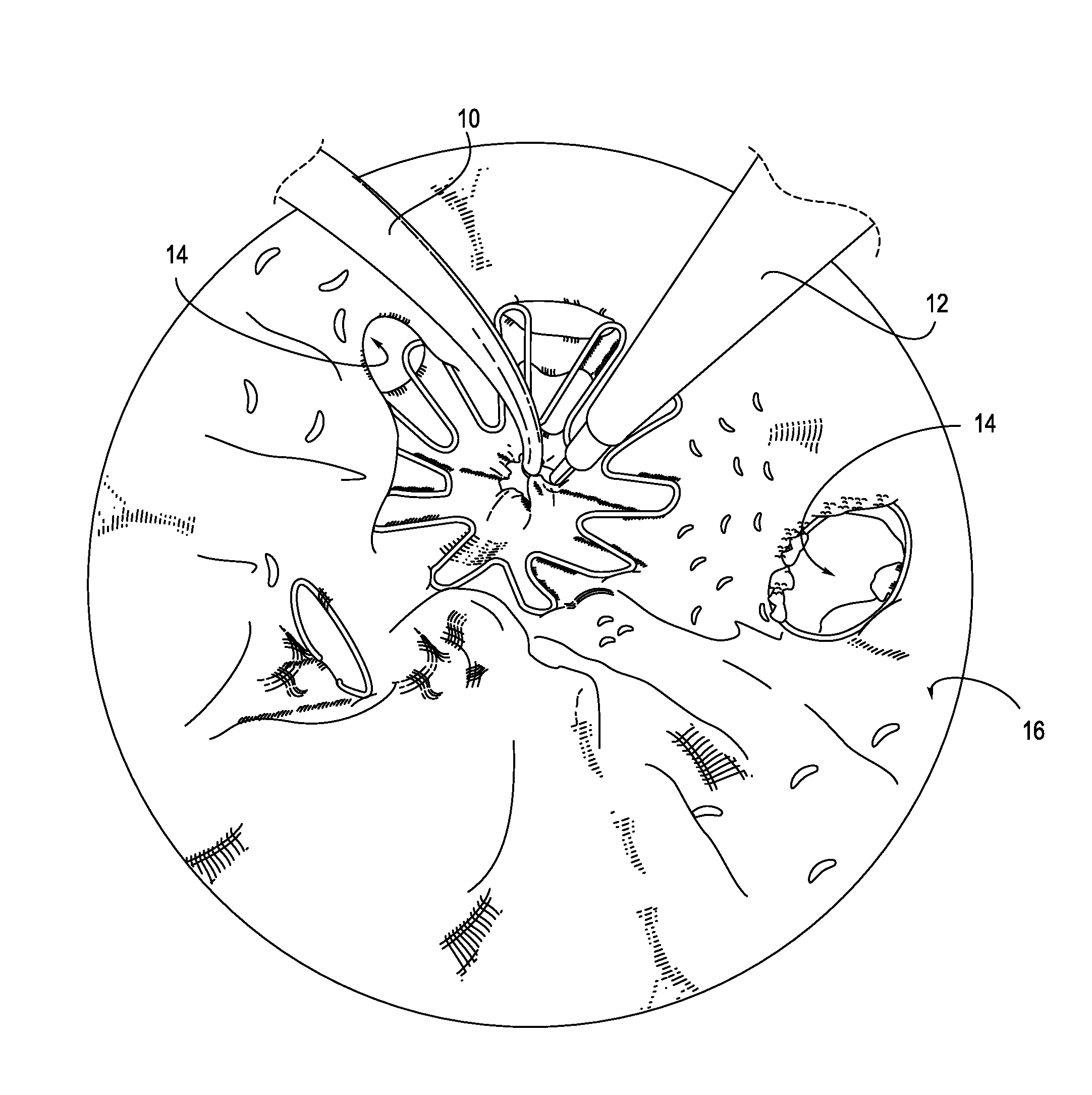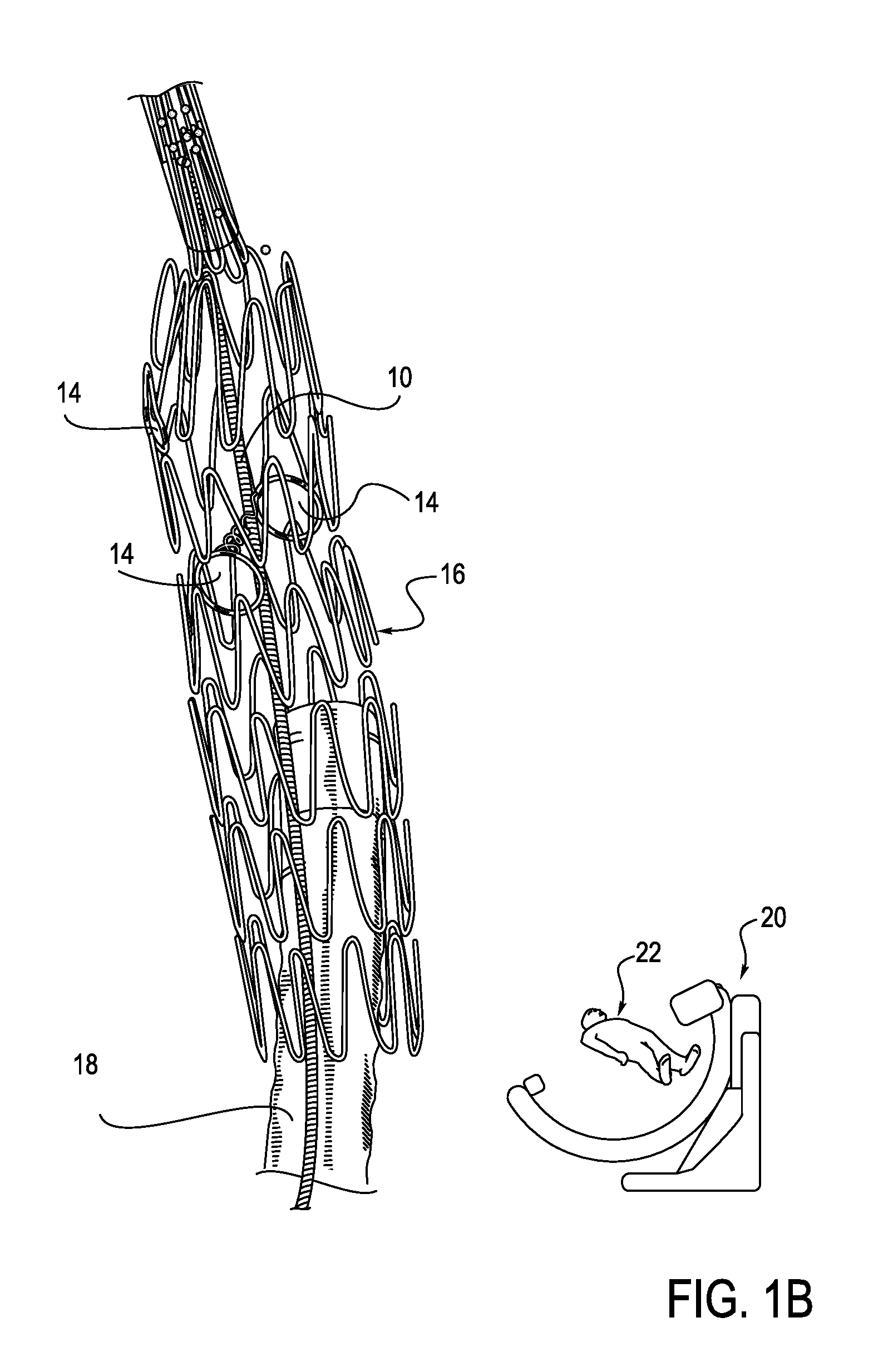Navigation with 3D localization using 2d images
a technology of 3d localization and 2d images, applied in the field of navigation with 3d localization using 2d images, can solve the problems of difficult or impossible to perceive exactly, two-dimensional images may not properly convey the true position or orientation of objects, and the difficulty of navigating a catheter in a three-dimensional environment using only a two-dimensional fluoroscopy imaging projection
- Summary
- Abstract
- Description
- Claims
- Application Information
AI Technical Summary
Benefits of technology
Problems solved by technology
Method used
Image
Examples
Embodiment Construction
[0025]Illustrative examples are shown in detail in the drawings below. Although the drawings represent the specific exemplary illustrations disclosed herein, the drawings are not necessarily to scale, and certain features may be exaggerated to better illustrate and explain an innovative aspect of an example. Further, the examples described herein are not intended to be exhaustive or otherwise limiting or restricting to the precise form and configuration shown in the drawings and disclosed in the following detailed description.
[0026]The description below and associated drawings generally describe ways of marking points or features in three-dimensional space to aid navigation of an elongated member, e.g., a catheter, without requiring a three-dimensional model.
[0027]In one exemplary illustration, a user interface and mathematical calculations are described that allow the physician to specify target anatomy in more than one two-dimensional view, e.g., using fluoroscopy. For example, th...
PUM
 Login to View More
Login to View More Abstract
Description
Claims
Application Information
 Login to View More
Login to View More - R&D
- Intellectual Property
- Life Sciences
- Materials
- Tech Scout
- Unparalleled Data Quality
- Higher Quality Content
- 60% Fewer Hallucinations
Browse by: Latest US Patents, China's latest patents, Technical Efficacy Thesaurus, Application Domain, Technology Topic, Popular Technical Reports.
© 2025 PatSnap. All rights reserved.Legal|Privacy policy|Modern Slavery Act Transparency Statement|Sitemap|About US| Contact US: help@patsnap.com



